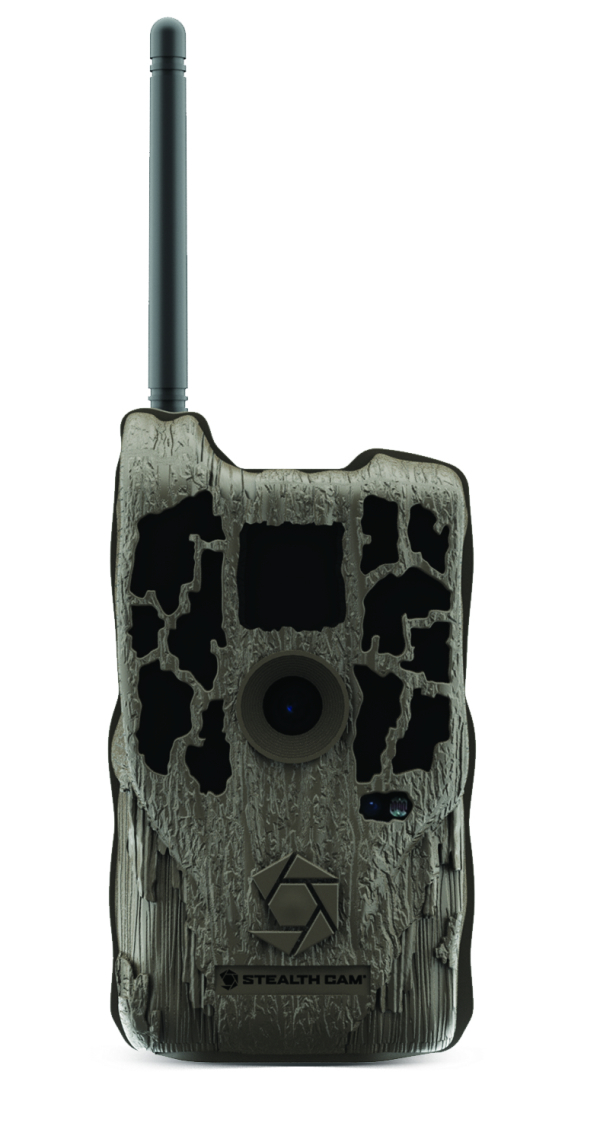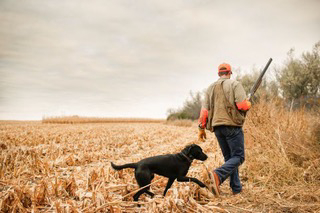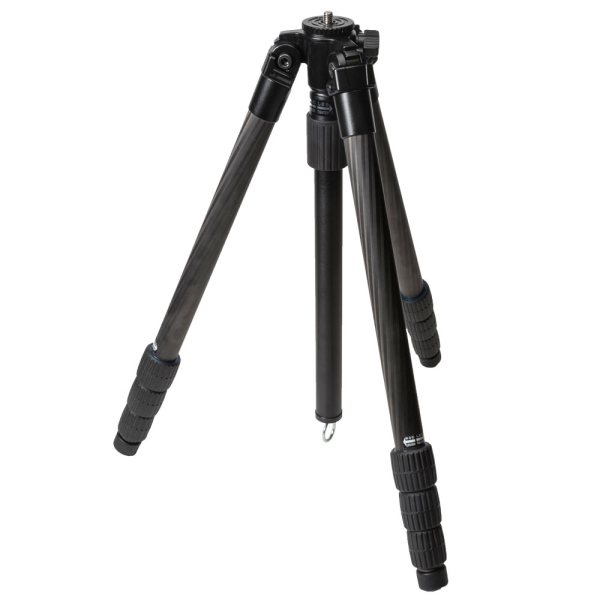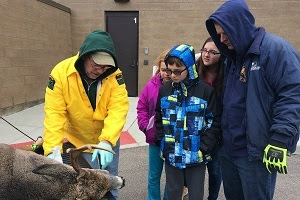By Glen Wunderlich
The Motor City Madman, Ted Nugent, was at the Michigan State Capitol this past week to support legislation that would permit deer and elk baiting in areas where it has been prohibited by law. The long-time rocker and former Michigan resident had plenty to say about rules to minimize the spread of Chronic Wasting Disease (CWD) being imposed on Michigan hunters. From “Uncle Ted’s” perspective, hunters should be able to hunt “their deer” on their land in any manner they see fit.
“The king doesn’t own the deer,” he said. “We the people own the deer.” If that were true, Nugent would be correct in his approach to baiting, but a number of Supreme Court rulings contradict Ted’s concept of ownership. Like it or not, this public trust doctrine of wildlife has been the nucleus of today’s successful model of wildlife management. And, Ted doesn’t like it.
Nugent went on to exclaim that baiting prohibition would “chase hunting families out of the sport for absolutely no reason.” No doubt, some deer hunters will not hunt because of baiting bans, but to say it would be for no reason is more than a stretch, although what he probably meant was that there was no “good” reason. Good or not is irrelevant.
It’s no secret that hunting participation is in decline nationwide and has been for many years. However, the aging hunting fraternity is retiring naturally, as it has been forever. The challenge for wildlife managers/hunters is to bring the younger generation into the fold in numbers large enough to continue funding efforts derived from license fees. When baiting was widely permitted in Michigan, hunting numbers had already been in decline for decades. Allowing baiting, therefore, will not change any of this.
What it will do, however, would be to concentrate deer “beyond their normal movement patterns [increasing] the likelihood of disease transmission,” said Ed Golder, DNR spokesperson. In a statement Tuesday, he said research shows that baiting and feeding increases the likelihood of disease transmission, citing a list of references on the department’s website. The department also believes the authority to ban baiting and feeding should remain with the Natural Resources Commission.
When one considers all the open NRC meetings, where public comments were welcomed and encouraged over the years, none of this is news – except maybe Ted Nugent’s opinions. He may be correct in that deer will still get the dreaded CWD, but ignoring the conclusions of wildlife biologists is off target. Nobody ever said we are on the path to end the spread of CWD, but fact-based science indicates we can minimize it. And, for now that’s the best we can do.
 New FLX Offers Dual Wireless Cam Management Systems
New FLX Offers Dual Wireless Cam Management Systems
 This weekend marks the start of the waterfowl hunting season for ducks, coots and mergansers in the North Zone (Upper Peninsula). The season runs Sept. 28 through Nov. 24, with an additional weekend hunt Nov. 30-Dec. 1. Goose season in the North Zone opened earlier this month and continues through Dec. 16.Anyone 16 or older who is interested in waterfowl hunting needs a base license, a waterfowl hunting license and the federal migratory bird hunting stamp. Hunters coming from other states can purchase a seven-day or three-day small game license, which allows purchase of a waterfowl license without needing to get a base license. For more details on license and waterfowl stamp requirements see pages 22-24 of the
This weekend marks the start of the waterfowl hunting season for ducks, coots and mergansers in the North Zone (Upper Peninsula). The season runs Sept. 28 through Nov. 24, with an additional weekend hunt Nov. 30-Dec. 1. Goose season in the North Zone opened earlier this month and continues through Dec. 16.Anyone 16 or older who is interested in waterfowl hunting needs a base license, a waterfowl hunting license and the federal migratory bird hunting stamp. Hunters coming from other states can purchase a seven-day or three-day small game license, which allows purchase of a waterfowl license without needing to get a base license. For more details on license and waterfowl stamp requirements see pages 22-24 of the  Newly released
Newly released 

 (MANSFIELD, TEXAS) – Kopfjäger introduces two dependable tripod systems, the K700 Heavy Duty Tripod and K800 Carbon Fiber Tripod. Kopfjäger’s tripods are designed to reduce fatigue and enhance mission-, competition- and hunting-oriented shooting in every environment by stabilizing your firearm.The K700 Heavy Duty Tripod is crafted from sturdy aluminum and features 3-level leg extensions with locking levers, 3-position angle locks and durable foam grips for comfortable hand placement. The reversible center column allows you to adjust the height of your firearm or camera by an extra 14.9 inches, giving you the option to shoot standing up or from seated and prone positions. Fully extracted the bipod measures 72 inches and just 27 inches when fully retracted. The K700 tripod can withstand a maximum weight capacity of 25 pounds and comes complete with a carrying case.
(MANSFIELD, TEXAS) – Kopfjäger introduces two dependable tripod systems, the K700 Heavy Duty Tripod and K800 Carbon Fiber Tripod. Kopfjäger’s tripods are designed to reduce fatigue and enhance mission-, competition- and hunting-oriented shooting in every environment by stabilizing your firearm.The K700 Heavy Duty Tripod is crafted from sturdy aluminum and features 3-level leg extensions with locking levers, 3-position angle locks and durable foam grips for comfortable hand placement. The reversible center column allows you to adjust the height of your firearm or camera by an extra 14.9 inches, giving you the option to shoot standing up or from seated and prone positions. Fully extracted the bipod measures 72 inches and just 27 inches when fully retracted. The K700 tripod can withstand a maximum weight capacity of 25 pounds and comes complete with a carrying case.
 Hunters eager to get a start on Michigan’s deer seasons will take to the woods this weekend, Sept. 21-22, for the early antlerless firearm season – open on private lands in select Lower Peninsula deer management units. Page 40 of the
Hunters eager to get a start on Michigan’s deer seasons will take to the woods this weekend, Sept. 21-22, for the early antlerless firearm season – open on private lands in select Lower Peninsula deer management units. Page 40 of the 
